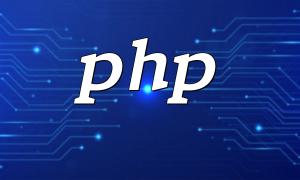Introduction
With the rapid growth of the internet, PHP has become one of the most popular server-side programming languages widely used in web development. In PHP development, using the MVC (Model-View-Controller) framework has become a common practice as it separates code and logic, improving development efficiency and code quality. This article will focus on practical strategies for PHP8 framework MVC development, aimed at enhancing team collaboration and project quality.
1. Understanding the MVC Concept and Principles
First, we need to define what the MVC pattern is and how it works. MVC is a software architectural pattern that divides an application into three main parts: Model, View, and Controller. The Model handles data logic, the View displays data, and the Controller accepts user requests and invokes the appropriate Model and View. This architecture allows for more modular development, easier maintenance, and scalability.
2. Choosing the Right PHP8 Framework
In PHP development, there are many excellent MVC frameworks to choose from, such as Laravel, Symfony, and Yii. Choosing the right PHP8 framework is crucial for improving team collaboration. When selecting a framework, consider the following factors:
- Community Activity: Choosing a framework with an active community ensures better development support and problem-solving.
- Documentation and Learning Resources: The completeness of the framework's documentation and learning resources is critical for team members to learn and use it effectively.
- Performance and Scalability: A high-performance, scalable framework will meet project needs and support the team's long-term development.
3. Strictly Following MVC Design Principles
In actual development, it is important to strictly follow MVC design principles to ensure smooth interaction between the Model, View, and Controller. Below are some practical strategies in development:
- Model Handles Only Data Processing: The Model should focus solely on data reading, storage, and processing, not business logic. Business logic should be handled in the Controller.
- View Handles Only Data Display: The View should only display the data provided by the Model and should not contain complex business logic. Complex logic should be handled in the Controller.
- Controller Handles User Requests and Business Logic: The Controller receives user requests and invokes the appropriate Model and View to process the business logic. It serves as a bridge between the Model and the View.
4. Using Version Control Tools for Team Collaboration
In team collaboration, using version control tools is essential. Version control tools track the history of code changes and facilitate collaboration and code review. Git is one of the most commonly used version control tools. Team members should follow standardized guidelines for code commits, branch management, and merges to ensure code consistency and stability.
5. Writing Clean and Readable Code with Comments
Writing clean and readable code is the foundation of team collaboration. Easy-to-understand and maintainable code reduces communication costs between team members and improves development efficiency. Additionally, adding comments where necessary can help others understand the functionality and purpose of the code.
6. Writing Unit Tests and Integration Tests
Unit tests and integration tests are essential tools for ensuring code quality and stability. Unit tests allow you to test individual pieces of code to verify if they work as expected. Integration tests, on the other hand, test the interaction between different modules. Writing comprehensive test cases can help identify and solve problems when modifying code, ensuring its usability and quality.
7. Continuous Integration and Automated Deployment
Continuous integration and automated deployment are important strategies for improving team collaboration and project quality. By using tools and scripts to automate code compilation, testing, and deployment, you can reduce labor costs and error rates, and deliver projects faster.
Conclusion
By understanding the MVC concept and principles, selecting the right PHP8 framework, strictly following MVC design principles, using version control tools for team collaboration, writing clean and readable code with comments, writing unit and integration tests, as well as practicing continuous integration and automated deployment, teams can improve collaboration and project quality. In real-world development, we should apply these strategies flexibly, adjusting and optimizing them based on specific requirements and project scales to achieve the best results.









